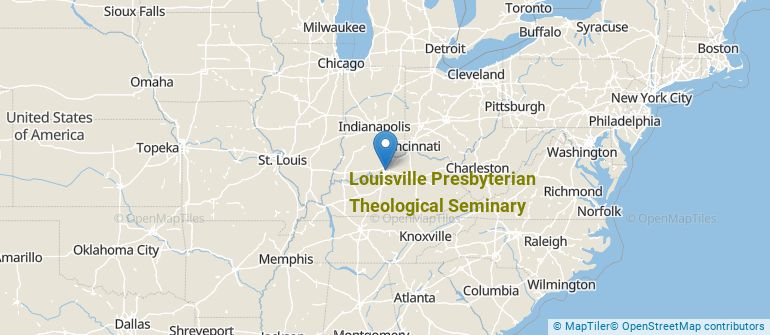 by our College Data Analytics Team
by our College Data Analytics TeamExplore the best ranked schools for the programs you are most interested in.
Louisville Seminary was not ranked in College Factual's 2025 Best Overall Colleges report. This could be for a number of reasons, including lack of data.
See all of the rankings for Louisville Presbyterian Theological Seminary.
Data for the student to faculty ratio for this school has not been reported.
In addition to the student to faculty ratio, some people look at what percentage of faculty members are full-time as a sign of how much time professors will be able to spend with their students. This is because part-time teachers may not be be on campus as much as their full-time counterparts.
The full-time faculty percentage at Louisville Presbyterian Theological Seminary is 100%. This is higher than the national average of 47%.
The student loan default rate at Louisville Seminary is 1.0%. This is significantly lower than the national default rate of 10.1%, which is a good sign that you'll be able to pay back your student loans.
Get more details about paying for Louisville Presbyterian Theological Seminary.
Get more details about the location of Louisville Presbyterian Theological Seminary.

Contact details for Louisville Seminary are given below.
| Contact Details | |
|---|---|
| Address: | 1044 Alta Vista Rd, Louisville, KY 40205-1798 |
| Phone: | 502-895-3411 |
| Website: | www.lpts.edu/ |
| Most Popular Majors | Bachelor’s Degrees | Average Salary of Graduates |
|---|---|---|
| Theological & Ministerial Studies | 28 | NA |
| Pastoral Counseling & Specialized Ministries | 10 | NA |
Footnotes
*The racial-ethnic minorities count is calculated by taking the total number of students and subtracting white students, international students, and students whose race/ethnicity was unknown. This number is then divided by the total number of students at the school to obtain the racial-ethnic minorities percentage.
References
More about our data sources and methodologies.